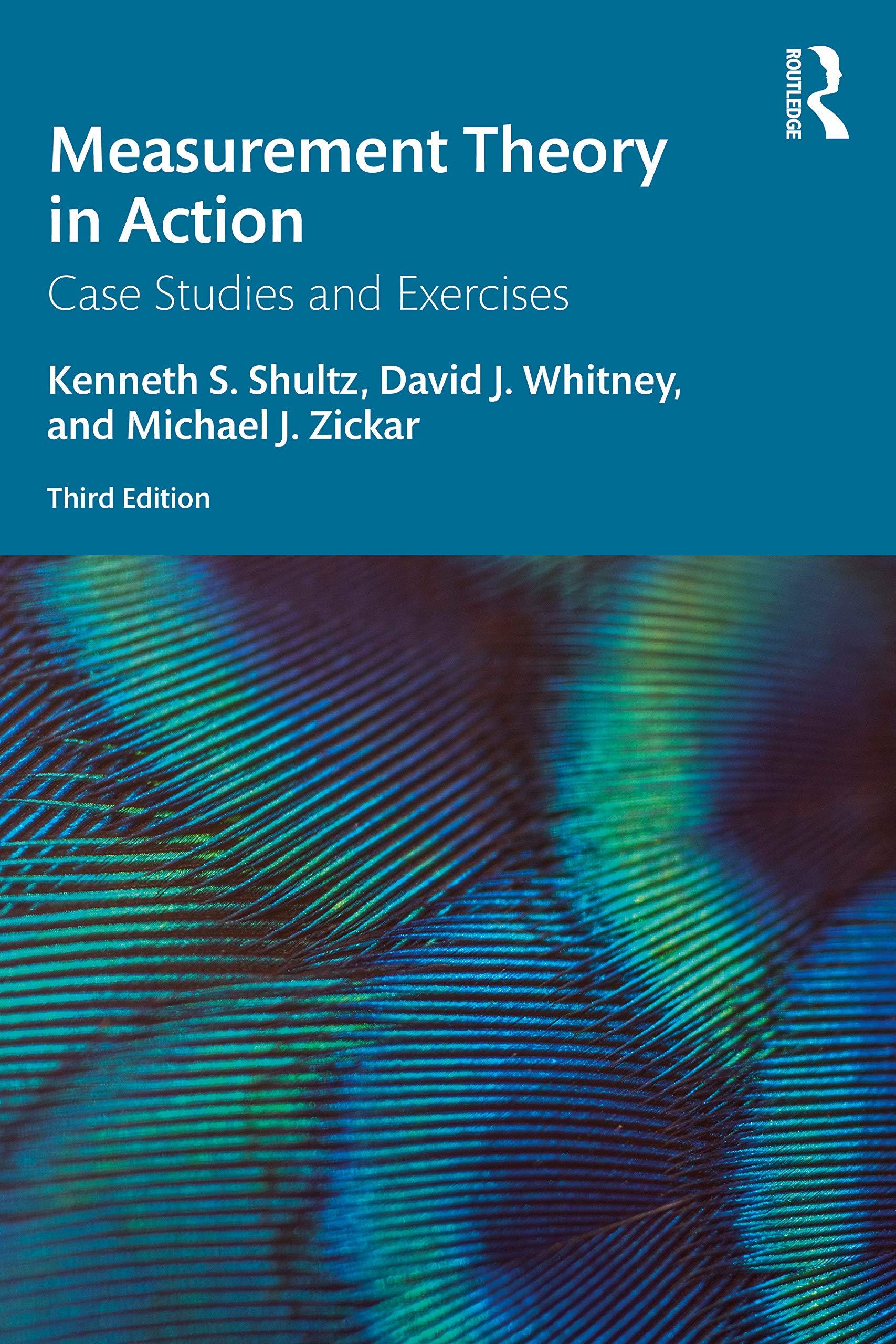1. Using only those items retained following Exercises 15.2 and 15.3, conduct a reliability analysis of each...
Question:
1. Using only those items retained following Exercises 15.2 and 15.3, conduct a reliability analysis of each dimension of the scale (as represented by the factors that emerged in Exercise 15.3). (Alternatively, if your instructor omitted Exercise 15.3, develop scale dimensions based on your rational categorization of the items you expect to assess each of the five dimensions discussed in the prologue above.) Choose the following options:
• Compute alpha.
• Select the options “scale if item-deleted” and “item-total correlations.”
2. Examine the output for each reliability analysis. Compare the obtained alpha with the alpha estimated if each particular item was deleted. Would the alpha increase if an item were deleted from the scale? If the answer is no, retain all items. If the answer is yes, you may consider dropping the item with the lowest item total correlation from the final version of the scale. First, however, ask yourself the following questions:
• Would dropping the item increase the alpha substantially?
• Is there a logical reason the item seems different from the other items loading on this factor? If an item was dropped from a dimension, rerun the reliability analysis and repeat the process. Note that alpha is improved by dropping items with low item-total correlations.
3. Once the alphas of each dimension of the scale have been determined, compute the alpha of the overall scale.
Exercises 15.2
Use the data file “Joinership rational ratings.sav” to do the following:
1. Compute the mean and standard deviation of each item.
2. Determine a single cut score that you believe reflects SMEs’ judgments that the item is too low in relevance to be included for further consideration. There are no rules of thumb here—you’ll have to rely on your own judgment. However, don’t set your cut score so high that you have too few items for the remaining steps.
3. Justify your choice of a cut score in item 2. Why should items that receive a rating at the cut score or above be retained for further analysis? Why should items below this cut score be discarded from further analysis?
Exercises 15.3
1. Using the data file “Joinership data recoded.sav,” conduct an exploratory factor analysis of those items that were retained following examination of the SME ratings. Use the following options found within your data analysis software:
• Choose principal axis factoring as the method of extraction.
• Request a scree plot. Base the number of factors that emerge on your judgment of the results of the scree plot.
• For the method of rotation, select Promax (see Module 18 for an explanation of why Promax is recommended).
• Choose “sort by size” to display factor loadings.
2. Interpret the results of your factor analysis.
a. How many interpretable factors emerged? This is the dimensionality of your scale. Label each interpretable factor by examining the items that it comprises.
b. Which items load on each interpretable factor?
c. Discard any items that fail to load on an interpretable factor.
Step by Step Answer:

Measurement Theory In Action
ISBN: 9780367192181
3rd Edition
Authors: Kenneth S Shultz, David Whitney, Michael J Zickar





